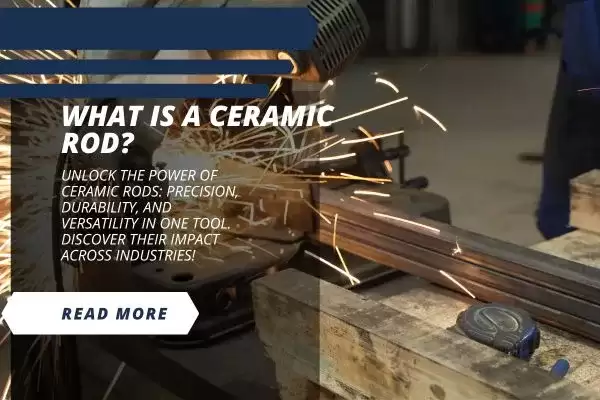
Sep 11,2023
The ceramic rod is a testament to human ingenuity regarding precision tools in various industries. But what exactly is a ceramic rod? In this article, we'll delve into the intricacies of this remarkable tool, shedding light on its composition, applications, and why it holds a special place in technical fields.
In its simplest form, a ceramic rod is a cylindrical tool composed of a ceramic material. This material is typically engineered from advanced ceramics, non-metallic, inorganic compounds known for their exceptional hardness, heat resistance, and electrical insulation properties. This makes ceramic rods a crucial component in a multitude of industries.
One of the most common materials used in ceramic rods is alumina, also known as aluminum oxide (Al2O3). This compound is revered for its high mechanical strength, outstanding wear resistance, and electrical insulating capabilities. In some specialized applications, silicon nitride and zirconia-based ceramics offer unique advantages such as superior thermal shock resistance and high-temperature stability.
Knife Sharpening: Ceramic rods have earned a distinguished reputation in the culinary world for their unmatched ability to sharpen knives. Their hardness enables them to effectively realign and refine knife edges, ensuring precise cuts every time.
Metalworking: In industries like metalworking and machining, ceramic rods find their place in honing and finishing processes. Their abrasive properties allow them to achieve fine surface finishes on various metals.
Electronics and Semiconductors: Ceramic rods are pivotal in producing electronic components and semiconductors thanks to their electrical insulating properties. They provide a stable and non-conductive platform for delicate processes.
Medical and Dental: Ceramic rods are used in medical and dental instruments due to their biocompatibility and resistance to chemical corrosion. They find applications in cutting, grinding, and shaping procedures.
Textile Industry: In textile manufacturing, ceramic rods are indispensable for guiding threads and fibers during production. Their smooth surface and wear resistance ensure seamless operations.
According to industry reports, the global market for ceramic rods is projected to grow at a CAGR of 6.5% from 2021 to 2026. This surge is attributed to the escalating demand across various end-use industries, including automotive, aerospace, and electronics. The superior properties of ceramic rods, such as high strength-to-weight ratio and excellent thermal stability, contribute significantly to this growth.
The ceramic rod stands tall in the realm of precision tools, offering a potent blend of hardness, heat resistance, and electrical insulation. Its applications span various industries, from culinary arts to semiconductor production. As the market continues its upward trajectory, the importance of ceramic rods in shaping modern technology and industry cannot be overstated.